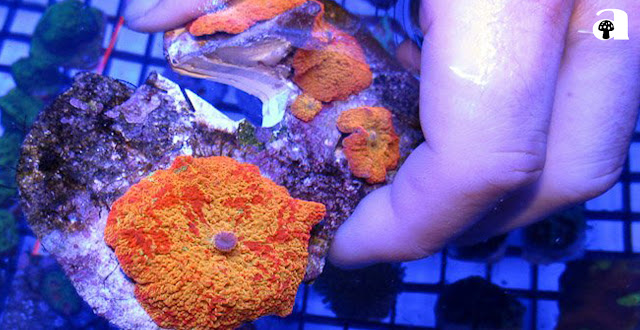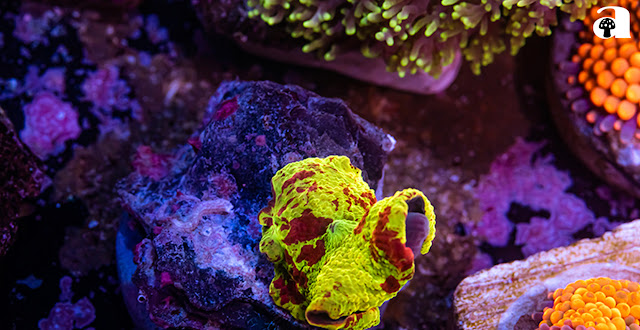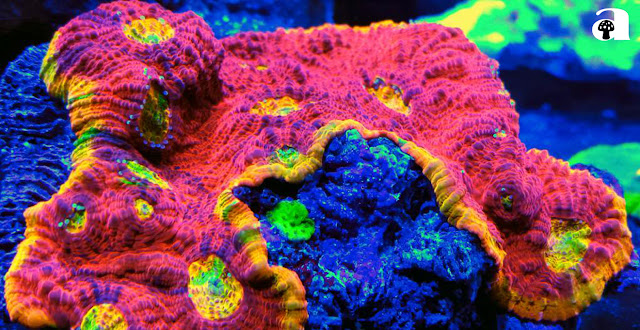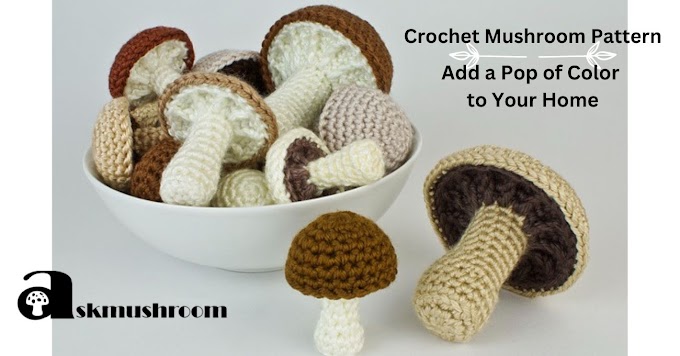Jawbreaker Mushrooms: The Coral That Will Make Your Tank Pop
Jawbreaker mushroom facts
Jawbreaker mushrooms are a type of discosoma mushroom that are highly sought after by hobbyists due to their unique and vivid swirl patterns. They are one of the brightest and most uniquely colored corals in the saltwater hobby and make a stunning addition to any reef tank.
Jawbreaker mushrooms are photosynthetic and are able to use aquarium lighting to meet their energy needs. However, they will grow faster if they are spot fed with microplankton or brine shrimp. Jawbreaker mushrooms are slow-growing and have a slow growth rate.
They are compatible with peaceful tank mates and have a low care level, making them easy to care for.
Jawbreaker mushrooms are yellow with a hint of orange hue, which tend to develop red/green/purple marks through their life and propagation. They get their name from their vivid swirl patterns.
Jawbreaker mushrooms are extensively aquacultured, and it would be very rare to come across a piece for sale that was not captive-bred. They are available for purchase from various online stores, such as Reef Insanity Mushrooms and Vivid Aquariums
Jawbreaker mushroom is a type of mushroom that can be propagated through water movement. The traditional Orange Jawbreaker is the easiest to naturally propagate, while the Kryptonite Jawbreaker has been harder to propagate and the Eclectus Jawbreaker has been the most challenging.
The price of the Jawbreaker mushroom varies depending on the type and size of the mushroom
Jawbreaker mushroom Identification
Jawbreaker mushrooms are a type of discosoma mushroom that have vivid swirl patterns in yellow with a hint of orange hue, which tend to develop red/green/purple marks through their life and propagation. They are one of the brightest and most uniquely colored corals in the saltwater hobby.
While any discosoma mushroom can technically be a jawbreaker, there are few color variants that are generally accepted as jawbreakers. Due to their popularity and relatively high price, Jawbreaker Mushrooms are extensively aquacultured and it would be very rare to come across a piece for sale that was not captive bred
Jawbreaker mushroom uses
Jawbreaker mushrooms are a type of discosoma mushroom that are highly sought after by hobbyists due to their unique and bright colors. They are one of the brightest and most uniquely colored corals in the saltwater hobby and make a stunning addition to any reef tank.
Jawbreaker mushrooms get their name from their vivid swirl patterns. As the mushroom grows, it takes on rich red streaks, and sometimes green veins. They are slow-growing and photosynthetic.
Due to their popularity and relatively high price, Jawbreaker Mushrooms are extensively aqua cultured. They are a great coral to start out with, but may not be perfect as a first coral
Jawbreaker mushroom cultivation
Jawbreaker mushrooms are extensively aqua cultured and are photosynthetic, meaning they are able to use aquarium lighting to meet their energy needs. However, they will grow faster if they are spot fed with microplankton or brine shrimp.
Jawbreaker mushrooms can be propagated by fragging, which involves cutting a piece of the mushroom and attaching it to a rock or frag plug. The mother mushroom will continue to grow and produce more babies.
When propagating, it is important to use a clean razor blade and to dip the frag in coral dip to prevent any infections. Mushroom corals, including Jawbreaker mushrooms, are a great coral to start out with, but may not be perfect as a first coral.
Jawbreaker mushroom toxicity
There is no information available on the toxicity of Jawbreaker mushrooms. How
ever, it is important to note that some zoanthid species, especially those in the genera of Palythoa and Protopalythoa, can be highly toxic for humans.
These Hexcorallians may excrete Palytoxin, one of the most toxic organic substances in the world. Normally, this will not be noticed during the reefkeeper’s normal daily routine, but can pose a risk if the coral is not handled properly.
Jawbreaker mushroom edibility
There is no information available on the edibility of Jawbreaker mushrooms. However, it is important to note that they are a type of coral and not intended for consumption.
How to care for jawbreaker mushrooms in a home aquarium
Jawbreaker mushrooms are a spectacular strand of Discosoma mushrooms that are highly sought after by hobbyists. They are one of the brightest and most uniquely colored corals in the saltwater hobby and make a stunning addition to any reef tank.
Here are some tips on how to care for Jawbreaker mushrooms in a home aquarium:
Lighting: Jawbreaker mushrooms require medium lighting. They should be placed in an area of the tank that receives moderate light.
Water flow: Jawbreaker mushrooms require low water flow. They should be placed in an area of the tank that receives low to moderate water flow.
Placement: Jawbreaker mushrooms should be placed in a low position in the tank. They should be placed on a rock or frag plug.
Water parameters: Jawbreaker mushrooms require stable water parameters. The ideal temperature range is 75-80°F, and the ideal pH range is 8.1-8.4. The salinity should be between 1.023-1.025.
Feeding: Jawbreaker mushrooms are photosynthetic and do not require regular feeding. However, they will benefit from occasional feedings of small pieces of meaty foods such as mysis shrimp or brine shrimp.
Propagation: Jawbreaker mushrooms can be propagated by placing them on a frag rack and adjusting them every so often. All Jawbreaker mushroom propagation had one thing in common – water movement
Jawbreaker mushrooms are easy to care for and make a stunning addition to any reef tank. They require medium lighting, low water flow, and stable water parameters.
They do not require regular feeding but will benefit from occasional feedings of small pieces of meaty foods. Propagation methods involve placing them on a frag rack and adjusting them every so often.
Common diseases or pests that affect jawbreaker mushrooms in a home aquarium
Jawbreaker mushrooms are relatively hardy and do not seem to have many issues with pests. However, flatworms, some copepods/isopods, and nudibranchs/sea slugs can infect mushroom corals. These pests can strip the mushroom coral's tissues, so coral dipping is a must to remove these pests
It is important to treat wild-caught mushrooms for pests and diseases before placing them into your aquarium. Wild-caught corals can bring disease and pests into the tank
Tissue necrosis is another common problem that can affect mushroom corals. Algae grow on unhealthy, dying tissue, so if this is the case, your mushroom coral is likely suffering from S/RTN. If you suspect your mushroom coral has STN or RTN, then you must test the water immediately and check the parameters are within range. If the necrosis is severe, consider removing your infected coral
Jawbreaker mushrooms are relatively hardy and do not seem to have many issues with pests. However, it is important to treat wild-caught mushrooms for pests and diseases before placing them into your aquarium.
Coral dipping is a must to remove these pests. Tissue necrosis is another common problem that can affect mushroom corals, and it is important to test the water immediately and check the parameters are within range if you suspect your mushroom coral has STN or RTN.
Recommended treatments for pest or disease infestation in jawbreaker mushrooms
Unfortunately, there is no information available on recommended treatments for pest or disease infestation specifically in Jawbreaker mushrooms. However, it is recommended to treat wild-caught mushrooms for pests and diseases before placing them into your aquarium. Coral dipping is a must to remove these pests
In general, for mushroom corals, access resources on mushroom diseases and pests, including green mold, bacterial blotch disease, and nematodes. Find tips on integrated pest management
If you suspect your mushroom coral has STN or RTN, then you must test the water immediately and check the parameters are within range. If the necrosis is severe, consider removing your infected coral
It is important to treat wild-caught mushrooms for pests and diseases before placing them into your aquarium. Coral dipping is a must to remove these pests. For more information on mushroom diseases and pests, access resources on mushroom diseases and pests, including green mold, bacterial blotch disease, and nematodes.
Find tips on integrated pest management. If you suspect your mushroom coral has STN or RTN, then you must test the water immediately and check the parameters are within range.












.jpg)





